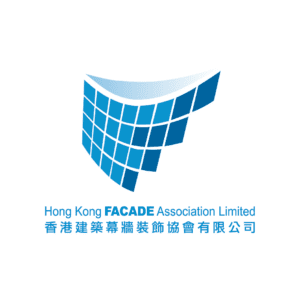

ConTech & PropTech Stage
ConTech & PropTech Stage
Day 1 – Thursday 11 Sept AM
11:10 – 11:50
With buildings generating 40% of global emissions, PropTech is becoming essential for greening the real estate sector. This session examines how innovative technologies are cutting emissions across the property lifecycle – from AI-powered energy management to circular construction solutions.
PropTech founders and investors will share practical solutions being deployed today, while discussing key challenges like adoption barriers and policy needs. Discover how Hong Kong’s tech ecosystem can drive regional transition to sustainable buildings.
12:40 – 13:20
As ESG priorities reshape capital markets, green bonds and sustainable financing are transforming real estate development across Asia Pacific. This session examines how innovative financial instruments are accelerating the sector’s decarbonization while delivering competitive returns.
Join this engaging session to hear from leading banks, developers, and bond issuers as they share their key trends in APAC’s green real estate debt market as well as best practices for structuring credible green financing deals.
Day 2 – Friday 15 Sept AM
Day 2 – Friday 12 Sept AM
10:40 – 11:20
Buildings are the foundation of our communities, but their emissions are also driving the climate crisis. The building sector contributes nearly 40% of all global greenhouse gas emissions. To continue to thrive, society needs net zero buildings. A net zero building is simply a building that has no net carbon emissions during its construction and operation. Emissions are reduced and what’s leftover is balanced by renewable energy or carbon offsets. Innovative façade design is the key to achieve a net zero building such as incorporating BIPV panels in the façade design and consider adopting modular construction methods in lieu of traditional ones.
Now is the time to implement net zero carbon for buildings, both new and existing. Achieving net zero carbon will require us to transform how we design, build, and operate buildings of all types and scales.
Learnings
- Understanding Net-Zero Transition
- Science-Based Target for Buildings
- How to Deliver the Practice by Technological Developments
- Our Green Vision to Global Mission
Post-event Actions
- Follow Up with Contacts: Actively connect with fellow attendees and speakers via platforms like LinkedIn or email to solidify networking opportunities. This helps maintain relationships and opens doors for future collaborations.
- Share Knowledge: Summarize key insights, take notes, and share them with colleagues or peers through presentations, reports, or team meetings. This reinforces learning and benefits the broader organization.
- Provide Feedback: Offer constructive feedback to organizers through surveys or direct communication. This helps improve future events and shows engagement. Use tools like Google Forms for structured responses.
- Engage on Social Media: Post about the conference experience on platforms like Twitter or LinkedIn, using event hashtags to maintain visibility and continue discussions. Share quotes, photos, or key takeaways to stay connected with the event community.
Supported by


Hong Kong Façade Association Limited
The Hong Kong Façade Association (HKFA) strive to connect, to align and to join hands together with different organizations and individuals in Hong Kong to incorporate the concept of sustainability into building design so as to achieve the goal of carbon neutrality to reduce the environmental impacts to nature and improving our quality of life.
Our organisation’s sustainability goals for 2025
Climate change is a mega challenge for the world, leading to various disasters such as heatwaves, floods and hurricanes. These climate-induced natural disasters have caused significant environmental, economic, social, and health consequences. It is now a consensus of the society that climate change must be stopped.
Carbon neutrality is expected to address climate change challenges, and its achievement requires the collective efforts of various industries and sectors. The building and construction sector is a big energy consumer and greenhouse gas emitter as they are responsible for 37% of the global energy-related emissions, demonstrating significant opportunities to achieve of carbon neutrality. Consequently, there is an urgent need to achieve net zero carbon performance in the built environment.
Green retrofit is the sustainable refurbishment of an existing building to make it more efficient, better for the environment and sustainable for the future. When it comes to building envelope retrofitting, improving the energy efficiency of existing buildings is the key to reduce the carbon footprint. It usually involves installing better insulation, energy-efficient glazing, and more efficient lighting.
To further reduce carbon footprint, we can consider adding alternative energy sources for our power supply. Solar power is one of the renewable energy sources that heats and cools the indoor space and provides electricity. Installation of BIPV or solar panels on the roof of a building or incorporate them into the wall cladding of building facades is becoming increasingly affordable, and it is a great way to reduce the carbon footprint.
All sessions are subject to change.